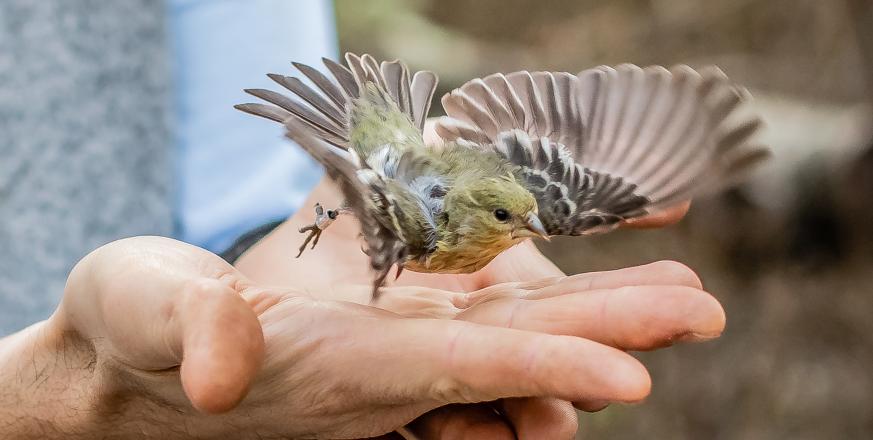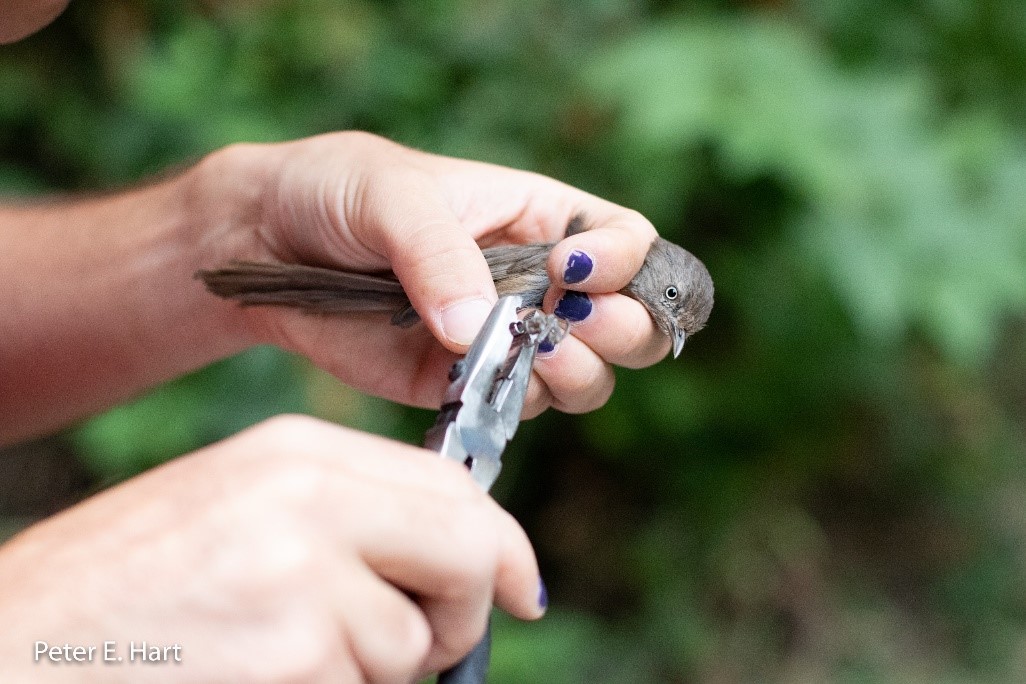Jasper Ridge Bird Banding Study

Summary
This project aims to achieve the following goals:
- Compare bird community and population parameters along a fragmentation gradient to assess how populations utilize and respond to fragmentation.
- Establish a long-term bird banding program to monitor breeding and migratory bird populations at Jasper Ridge Biological Preserve.
- Monitoring the avifauna as the riparian woodland undergoes successional and other changes in the landscape.
What is Banding?
Banding involves the live capture, marking, and release of wild birds. An array of mist nets, each measuring 12 meters across and 3 meters high, is set up approximately 30 minutes before sunrise. These nets passively capture birds that fly into them. Nets are monitored by our research team and birds are removed upon capture for processing. After the species has been identified we place a small aluminum band around the bird’s leg. Each band has a unique 9-digit number issued by the Bird Banding Laboratory of the USGS. Once the band is on the bird, additional data are taken, such as the age and sex, along with standard body measurements. After processing, the bird is safely released. Above, David Tattoni releases a newly banded Lesser Goldfinch.
Project Location (Sectors 16, 21, 30, 31)
 |  |  |  |  |  |  |  |  |
 |  |  |  |  |  |  |  |  |
 |  |  |  |  |  |  |  |  |
 |  |  |  |  |  |  |  |  |
 |  |  |  |  |  |  |  |  |
 |  |  |  |  |  |  |  |  |




